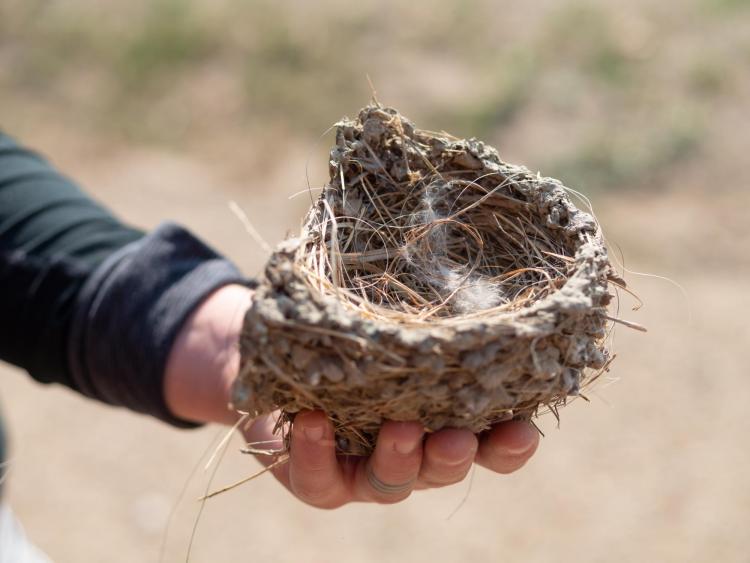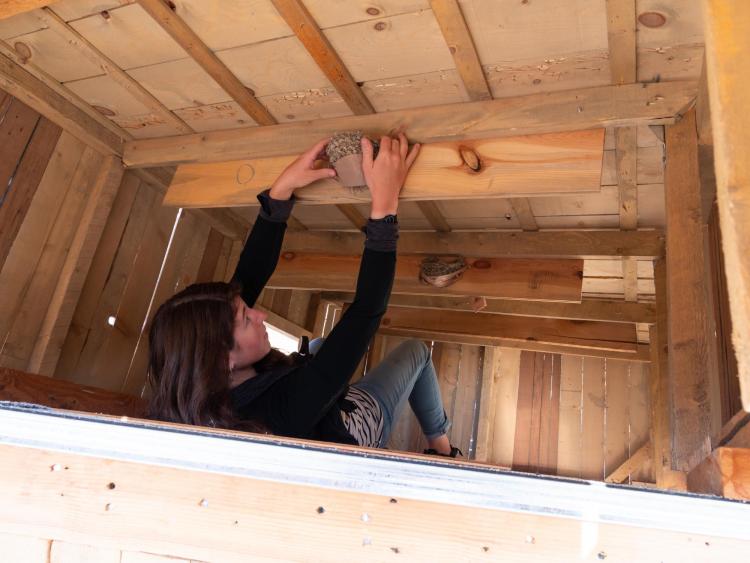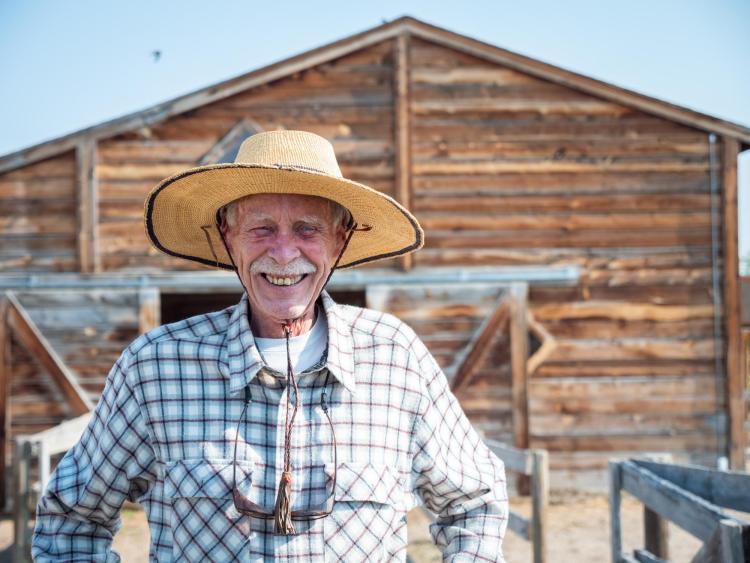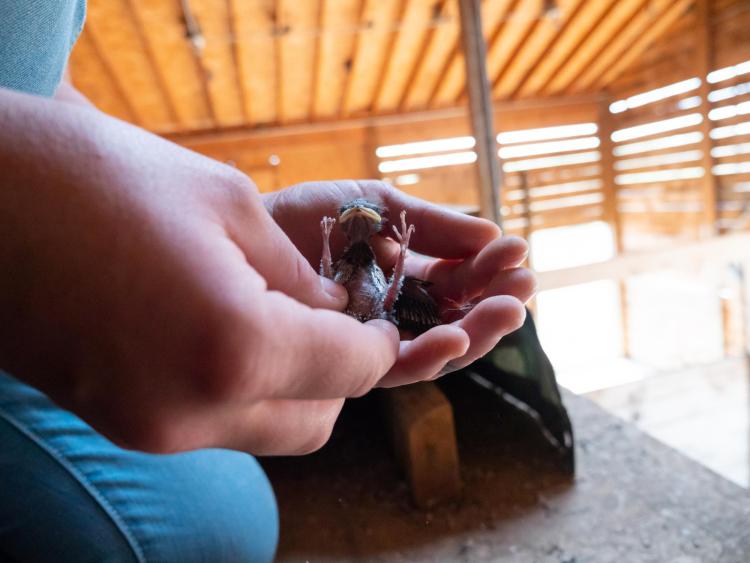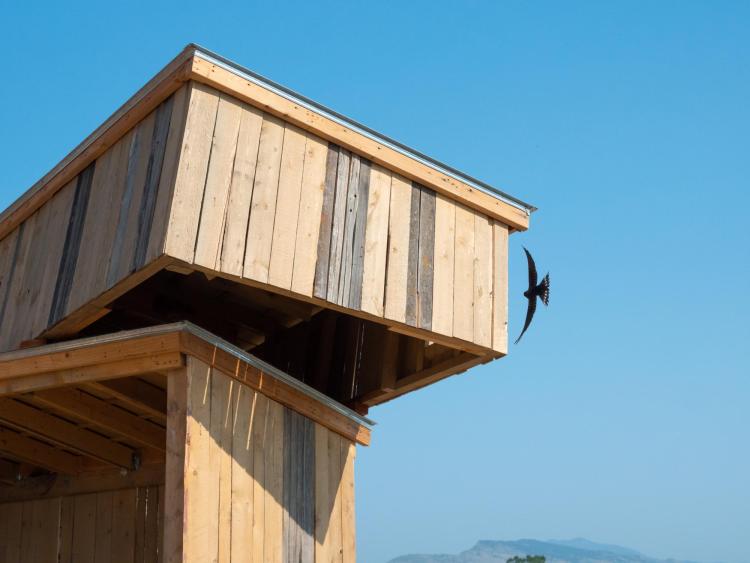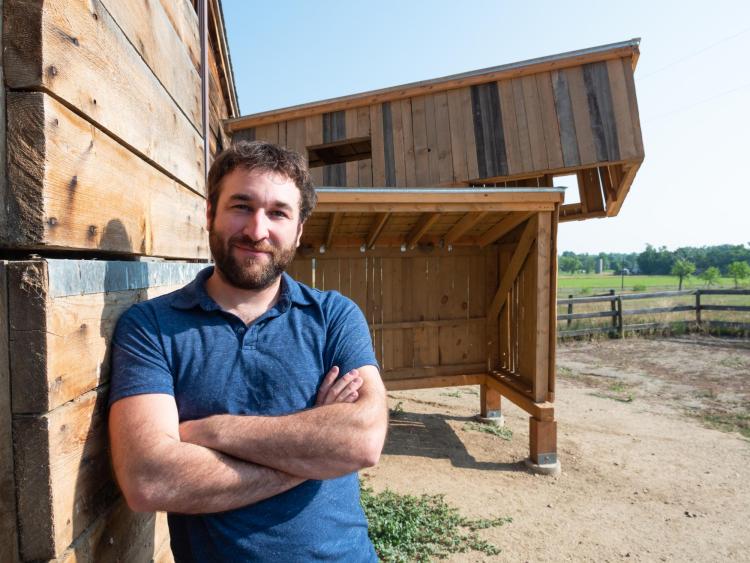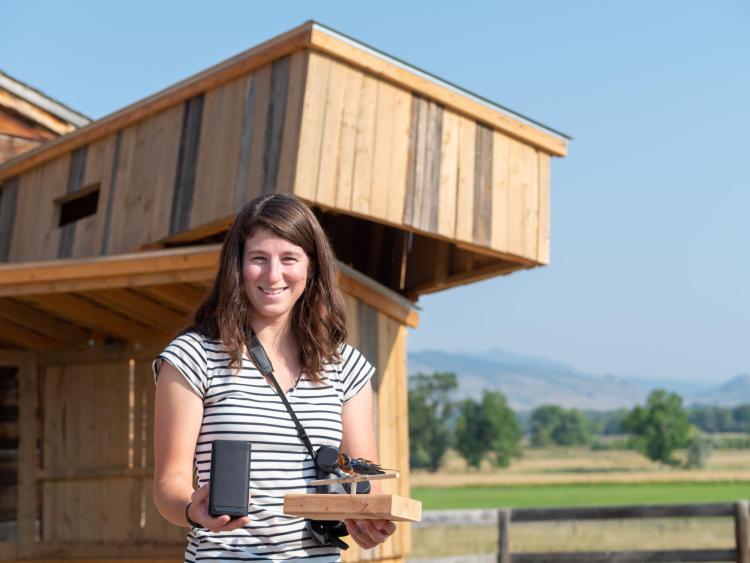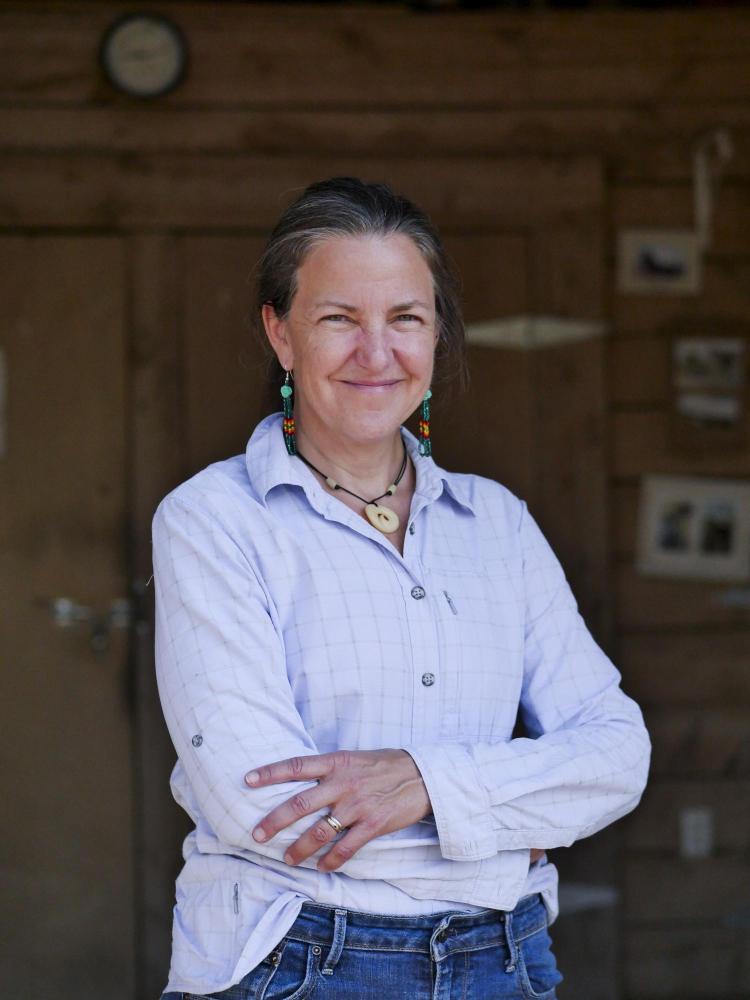Pushing Boundaries: Grad students think like barn swallows to craft an artistic nesting site
For hundreds of years, barn swallows have signaled the coming of spring. In many cultures, it is considered good luck to have barn swallows build nests on a person’s property.
Artifacts depicting barn swallows can be found throughout the world: in hieroglyphs at the pyramids in Egypt, on Bronze Age pottery, in cave paintings in France and Greece, and on Native American Lakota art.
[soundcloud width="100%" height="300" scrolling="no" frameborder="no" allow="autoplay" src="https://w.soundcloud.com/player/?url=https%3A//api.soundcloud.com/tracks/495555528%3Fsecret_token%3Ds-bGp6g&color=%23ff5500&auto_play=false&hide_related=false&show_comments=true&show_user=true&show_reposts=false&show_teaser=true&visual=true"][/soundcloud]
Distinguished by their deeply forked tails, dark blue bodies and reddish breasts, barn swallows can be seen swooping low over the water and land in search of flying insects to feed their young. Barn swallows once built their mud nests in caves and on rock cliffs throughout North America, but they now construct nests almost exclusively on built structures, such as barns, sheds, underpasses and abandoned buildings.
Humans and barn swallows have long coexisted peacefully, but several factors have dramatically reduced the birds’ numbers, one of which is a lack of available structures for the birds to use. Learning more about their breeding and migration habits, and providing more places they can use to nest, could help researchers determine how to protect them.
Rebecca Safran, associate professor of ecology and evolutionary biology at CU Boulder, and her group of student researchers have teamed up with Aaron Treher, lecturer in the Department of Art and Art History who developed a novel approach to conservation that’s part site-specific artwork and part structure to entice the birds into making it their home. If successful, the structure could be a model for similar ones in urban areas.
“The conservation status of barn swallows is declining precipitously,” Safran said. “Our goal with this installation was to create a structure that not only highlights the science and conservation concerns, but also the interesting co-existence we have with barn swallows and shows that they really do live side-by-side with us.”
Barn swallows can be found in Colorado from mid-April until the end of September and lay multiple broods during that time. They build a cup nest from mud pellets and feeds on insects caught in flight. The barn swallow’s song is a cheerful warble. One of the benefits of our coexistence with them is that a barn swallow consumes more than 800 mosquitoes a day.
Molly McDermott, a PhD student, and Treher, an MFA graduate, collaborated on the wooden sculpture that has been installed at a barn swallow colony on private land north of Boulder.
The site-specific artwork is attached to the barn on land owned by Richard Cargill. Safran and her team have been researching barn swallows at Cargill’s barn for more than 10 years. One of the tagged birds has been returning to the barn for seven years. It’s one of several study sites in Boulder County used by Safran and her team this summer. They have studied barn swallows throughout most of their breeding distribution in Asia, Europe,the Middle East, North Africa and North America.
The creation of the artwork began as Treher’s thesis work for his master’s degree. He named the structure the Observation Station. Its distinctive shape—a horizontal box stacked askew on top of a vertical box—is his interpretation of what a structure might look like if barn swallows designed it and how they might stack the two segments.
“We’re trying to find out how we can create more nesting space for barn swallows,” Treher said. “I designed it to appeal to the needs of the barn swallows and to make it so the landowner is comfortable with how it looks. All these different places around the world have building traditions that work with the ecology of a place. Finding the overlap between art and ecology is the sweet spot of my work.”
McDermott, who studies ecology and evolutionary biology, focuses her research on migration and how that interacts with barn swallow breeding biology.
She has been trying to lure swallows in by removing old nests from the original colony inside the barn and attaching them inside the sculpture. She has displayed a stuffed swallow to pique their interest and plays recordings of barn swallow songs. It all appears to be working, because 10 individual birds have made hundredsof visits to the sculpture this summer.
“We want to know what conditions will get these birds to visit this sculpture that’s designed as a way to augment their habitat,” McDermott said. “How can we induce birds to use spaces like this so we can learn what access they like? Signals from other swallows are important to them. Thinking another swallow has visited or is using the sculpture will attract them.”
The Observation Station, which represents an integration of art, science and community, is sponsored in part by Nature, Environment, Science & Technology (NEST) Studio for the Arts. NEST is a CU Boulder initiative that encourages artists and scientists to work together on a project. It was also sponsored by a scholarship from the sculpture and post-studio practice (SPS) area in the Department of Art and Art History, and the Art and Rural Environments Field School SPS area that promotes artwork that is collaborative, interdisciplinary, and environmentally and culturally aware.
Additional funds to sponsor the upcoming showcase of this project are provided by Inside the Greenhouse, an art/science collaborative initiative also at CU Boulder, founded by Safran and Associate Professors Beth Osnes (theatre and dance) and Max Boykoff (ENVS/CIRES/CSTPR).
“We want to show that you can actually move a population of swallows into a structure like this to give them more places to build nests,” Safran said.
Community art and science event
If you go
Who: Open to the public
What: Community art and science event
When: Saturday, Sept. 15
Presentations: 1–2:30 p.m.
Open house: 2:30–5 p.m.
Where: Cargill Ranch and Silk Road Studio, 11768 North 59th St.
Side By Side is a community art and science event scheduled for 1 to 5 p.m. Sept. 15 at Cargill Ranch and Silk Road Studio, 11768 North 59th St., Hygiene, Colorado.
The event is being held on the property of one of the landowners Safran’s team works with. Activities will include a walk-through of the site and exploration of the installation and its relationship to the barn swallows they study.
Artists and scientists collaborating for conservation research on barn swallows in Colorado and worldwide will give presentations from 1 to 2:30 p.m. The open house will take place from 2:30 to 5 p.m. It will include a tour of the Observation Station, a site-specific artwork and sound installation; viewing barn swallow nesting sites; refreshments and kids’ activities.
Side By Side is sponsored by NEST Studio for the Arts, Inside the Greenhouse, the sculpture and post-studio practice area in the Department of Art and Art History, and the Art and Rural Environments Field School.
The event grew from an interdisciplinary collaboration between artists and biologists at CU Boulder, who are interested in celebrating shared space with wildlife, focusing on barn swallows—a declining songbird species that nests exclusively in human-made spaces.




